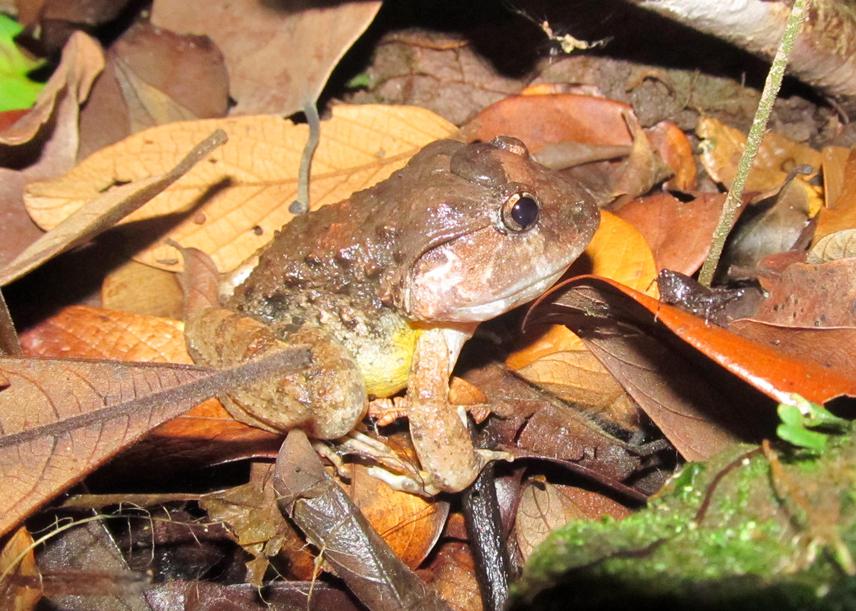Vinh Quang Luu
Other projects
25 Mar 2013
The Diversity of the Reptile Fauna of Hin Nam No National Biodiversity Conservation Area (Laos)
19 Mar 2015
The Annamite Mountain Range: An Evolutionary Barrier for Herpetofauna? A Case Study in the Karst Forest of the Hin Nam No National Protected Area, Central Laos
12 Apr 2016
Taxonomy, Phylogeny, Geography and Evolution of Bent-Toed Geckos (Squamata: Gekkonidae) Along the Annamite Mountain Range: A Case Study in Hin Nam No, Laos
The main goal is to elucidate the feedbacks of ecological adaptations on evolutionary process of the amphibians and reptiles in and surrounding Hin Nam No National Protected Area.

Lymnonectes gyldenstolpei.
Hin Nam No National Protected Area (HNN) is located in Khammouane Province, Laos, bordering Phong Nha–Ke Bang National Park (PN-KB) of central Vietnam in the east, and it is a part of the largest continuous limestone ecosystems in Southeast Asia. Vinton & Walston (1999) provided the first list of 46 amphibian and reptile species for HNN. On the eastern side of the Truong Son Range in Vietnam, Luu et al. (2013) recently recorded 151 species of amphibians and reptiles from PN-KB. These data showed that the herpetofauna of HNN must be still severely underestimated.
During the first field survey in 2013, Luu et al. (2013) recorded a total of 40 reptile species from HNN, including four new country records for Laos. Remarkably, a new species of Cyrtodactylus was described from the karst forest of Thakhek Town, an isolated mountain approximately 100 km away from HNN. This discovery indicated that the island-like, remote, and isolated karst formations around HNN could harbor a significant number of rare and endemic species.
Additional field work in HNN is to investigate the herpetofauna of the karst formations in and surrounding HNN. There is a high potential to discover further new records or event new species in the area, which will underline the biodiversity value of HNN and provide essential data for conservation management. Moreover, information about the ecology of the amphibians and reptiles will be gathered. Habitat characteristics and morphological traits of species including abundance will be determined and compared to those in PN-KB.
Comparison of species composition with PN-KB on the opposite side of the Truong Son Range will identify the leading factors that determine species compositions in HNN. Conservation status of species and threats to the biodiversity of HNN will be described. Finally, recommendations for conservation management in the protected area and buffer zone will be proposed.